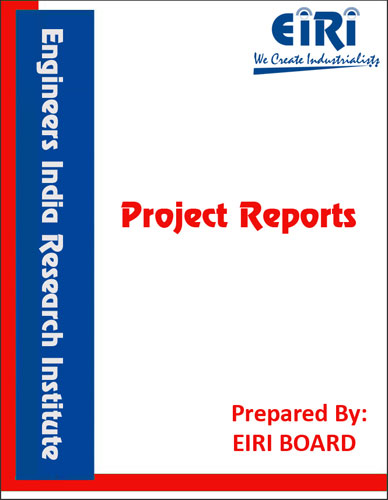The project report includes Present Market Position and Expected Future Demand, Market Size, Statistics, Trends, SWOT Analysis and Forecasts. Report provides a comprehensive analysis from industry covering detailed reporting and evaluates the position of the industry by providing insights to the SWOT analysis of the industry.
Honey is a part of bees, which gather sugar containing nectars form flowers. An enzyme introduced by the bees to the gathered nectars result in honey, which contain invert sugars, in the form of dextrose & levulose to the extent of approx.
75% of its total weight which makes it very sweet.
Honey is used as a flavouring agent in honey cakes and gateaux. Its flavour which is distincture, varies with the type of vector. The different flavours are the result of characteristic aroma of flowers form which the nectars are gathered. It is the comb-honey that is stored by the bees in the cells of the wax honey comb. Honey removed form the honey combe is by centrifugal force and thus honey called extracted honey.
Granulated honey the result of crystal formation which sooner or later develop in stained honey, which is the result a super saturation. This is removed by heating in a hot combe honey is produced in small rectangular boxes and sold as such.
Honey is produced by bees from nectar collection which serves the dual purpose to support metabolism of muscle activity during foraging and for long-term food storage as honey. During foraging, bees access part of the nectar collected to support metabolic activity of flight muscles, with the majority of collected nectar destined for regurgitation, digestion, and storage as honey. In cold weather or when other food sources are scarce, adult and larval bees use stored honey as food.
By contriving for bee swarms to nest in artificial hives, people have been able to semi domesticate the insects and harvest excess honey. In the hive or in a wild nest, the three types of bees are:
• a single female queen bee
• a seasonally variable number of male drone bees to fertilize new queens
• 20,000 to 40,000 female worker bees
Leaving the hive, foraging bees collect sugar-rich flower nectar and return to the hive where they use their “honey stomachs” to ingest and regurgitate the nectar repeatedly until it is partially digested. Bee digestive enzymes – invertase, amylase, and diastase – and gastric acid hydrolyze sucrose to a mixture of glucose and fructose. The bees work together as a group with the regurgitation and digestion for as long as 20 minutes until the product reaches storage quality. It is then placed in honeycomb cells left unsealed while still high in water content (about 20%) and natural yeasts, which, unchecked, would cause the sugars in the newly formed honey to ferment. The process continues as hive bees flutter their wings constantly to circulate air and evaporate water from the honey to content around 18%, raising the sugar concentration, and preventing fermentation. The bees then cap the cells with wax to seal them. As removed from the hive by a beekeeper, honey has a long shelf life and will not ferment if properly sealed.
Another source of honey is from a number of wasp species, such as the wasps Brachygastra lecheguana and Brachygastra mellifica, which are found in South and Central America. These species are known to feed on nectar and produce honey.
Some wasps, such as the Polistes versicolor, even consume honey themselves, switching from feeding on pollen in the middle of their lifecycles to feeding on honey, which can better provide for their energy needs.
INTRODUCTION
PROPERTIES
USES & APPLICATIONS
HONEY IN BAKING
HONEY IN CONFECTIONERY
CLASSIFICATION OF HONEY
CHARACTERISTICS AND COMPOSITION OF BEESWAX
MARKET SURVEY
FUTURE POTENTIAL OF BEEKEEPING IN INDIA
TOP GLOBAL PRODUCER OF HONEY
COMPOSITION OF HONEY
METHOD OF HONEY PRODUCTION & PROCESSING
PROCESS IN DETAILS
PROCESSING UP TO AND INCLUDING EXTRACTION
HEATING HONEY AND THE USE OF MINIMAL HEATING
STRAINING
TESTS ON EXTRACTED HONEY
DETERMINATION OF SPECIFIC GRAVITY
DETERMINATION OF MOISTURE
DETERMINATION OF TOTAL REDUCING SUGARS, SUCROSE
AND FRUCTOSE-GLUCOSE RATIO
DETERMINATION OF ASH
DETERMINATION OF ACIDITY
FIEHE’S AND ANILINE CHLORIDE TESTS
SAMPLING OF HONEY
HONEY HARVESTING AND PROCESSING
TABLE: BEEKEEPING METHODS WHICH MAY HAVE NEGATIVE
EFFECTS ON THE QUALITY OF THE HONEY
MODERN BEEKEEPING
SUPPLIERS OF RAW MATERIALS
SUPPLIERS OF PLANT AND MACHINERY
APPENDIX – A:
1. COST OF PLANT ECONOMICS
2. LAND & BUILDING
3. PLANT AND MACHINERY
4. FIXED CAPITAL INVESTMENT
5. RAW MATERIAL
6. SALARY AND WAGES
7. UTILITIES AND OVERHEADS
8. TOTAL WORKING CAPITAL
9. COST OF PRODUCTION
10. PROFITABILITY ANALYSIS
11. BREAK EVEN POINT
12. RESOURCES OF FINANCE
13. INTEREST CHART
14. DEPRECIATION CHART
15. CASH FLOW STATEMENT
16. PROJECTED BALANCE SHEET



